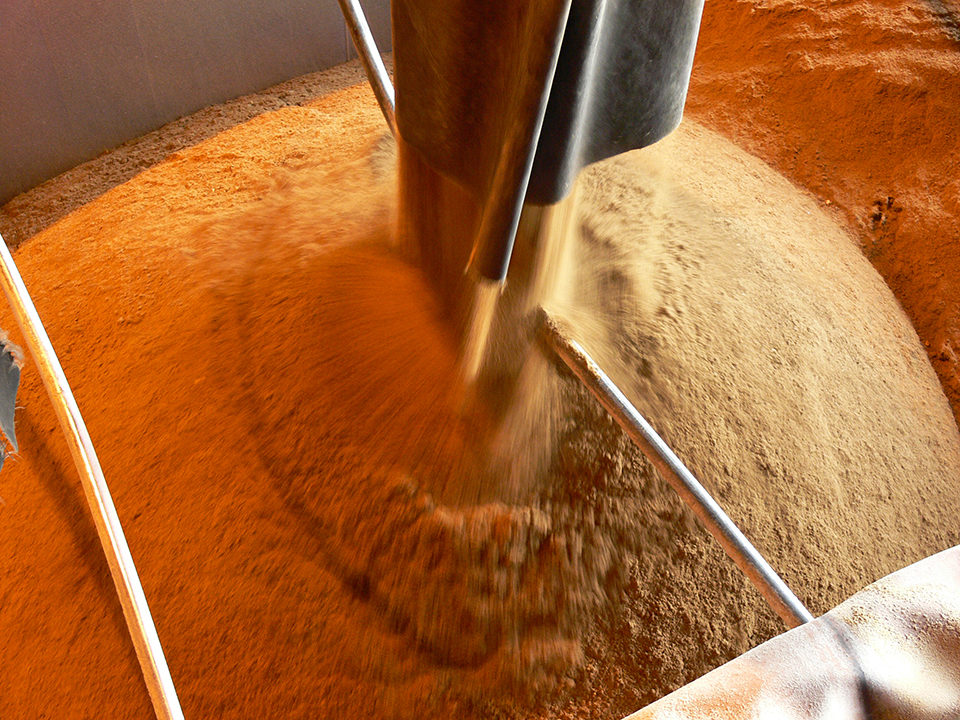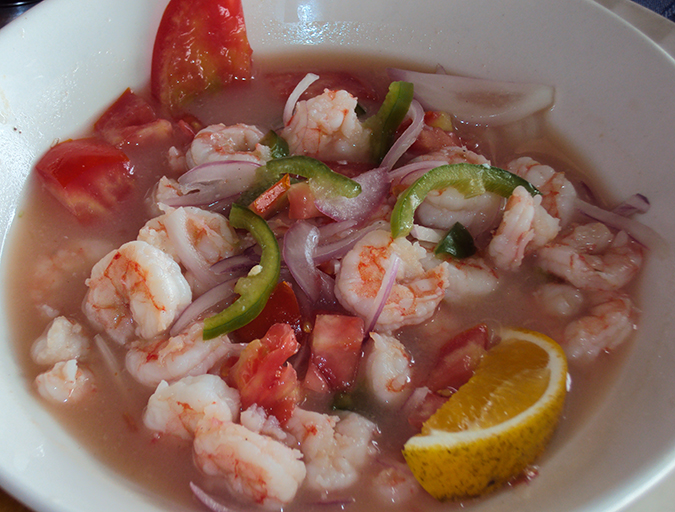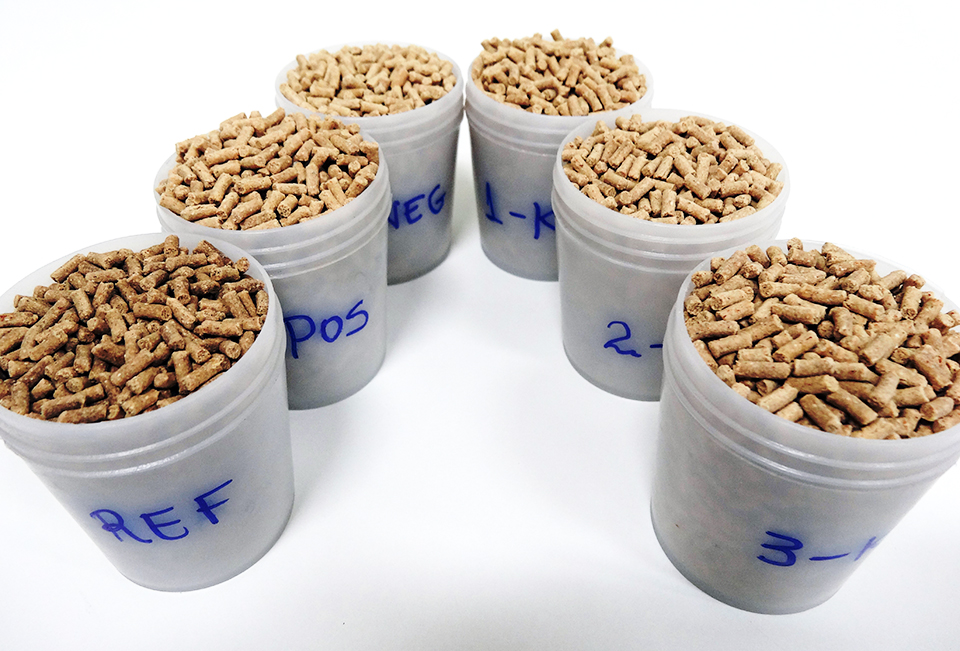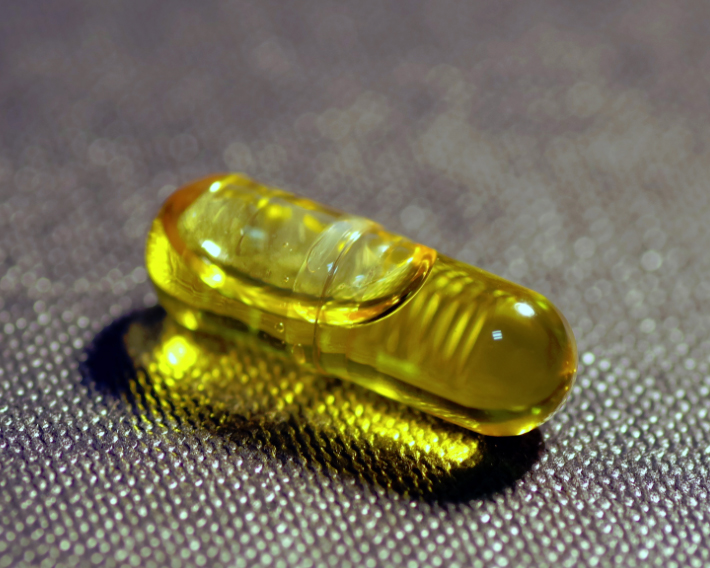Not all ingredients are equal regarding sterol content

One of the major concerns in shrimp nutrition is lipids nutrition, and there is ample evidence from previous studies that imbalance of sterol, particularly cholesterol, can severely reduce growth rates, molting frequency and survivals.
The ability of shrimp to synthesize sterols has been investigated by several authors, who established that shrimp are incapable of de novo sterol biosynthesis. Thus it is believed that shrimp rely upon a dietary source of cholesterol, though some studies have shown the occurrence of cholesterol synthesis in vitro by shrimp mitochondria. In addition, desmosterol, an intermediate in the de novo synthesis of cholesterol, seems to be converted into cholesterol by some species of shrimp.
While all ingredients carry some nutritional benefits, not all are created equal when it comes to sterol content. Alternative sources of sterols are emerging, and research is under way to increase the cholesterol content in poultry products for feed. Likewise, the high cost of cholesterol used in aquaculture feeds for shrimp makes it important to precisely define their requirement in order to avoid excess supplementation.
Feed study
To help define sterol requirements for shrimp, the authors examined the sterol composition of a number of animal feed samples to determine their suitability as shrimp feed.
Lipids were extracted from each sample (Table 1) according to a modified Bligh and Dyer extraction. This involved a first step of suspending the samples in a mixture of buffer that disrupts cells. To this mixture were added water and additional chloroform. The samples then sat overnight before the lower lipid-containing chloroform layer was removed under rotary evaporation and redissolved in methylene chloride.
Nates, Relative percentages of sterols, Table 1
| Sterols as % of Total Lipids Extracted | CH | CH1 | CHO | CAM | LAN | LAN2 | SIT |
|---|
Sterols as % of Total Lipids Extracted | CH | CH1 | CHO | CAM | LAN | LAN2 | SIT | ||
|---|---|---|---|---|---|---|---|---|---|
| Blood meal | 0.29 | 100.00 | |||||||
| Corn oil* | 0.50 | 23.00 | 1.00 | 66.00 | |||||
| Cottonseed oil* | 0.50 | 4.00 | 0.50 | 93.00 | |||||
| Feather meal | 13.10 | 73.00 | 1.20 | 18.20 | 0.30 | 4.70 | 2.60 | ||
| Fish oil* | 37.70 | 10.30 | 0.30 | 71.70 | |||||
| Meat and bone meal | 0.42 | 89.30 | 1.00 | 2.60 | 6.00 | 6.10 | 8.50 | 4.50 | |
| Palm oil* | 1.00 | 14.00 | 1.00 | 74.00 | |||||
| Poultry by-product meal | 2.32 | 74.10 | 1.10 | 1.00 | 17.60 | 6.30 | |||
| Poultry by-product meal, pet grade | 0.59 | 81.80 | 1.30 | 1.40 | 7.80 | 7.80 | |||
| Poultry by-product meal, feed grade | 1.29 | 77.20 | 1.50 | 1.40 | 15.70 | 4.20 | |||
| Soybean oil* | 0.50 | 20.00 | 3.00 | 53.00 |
* T. M. Jeong, 1975
CH = Cholesterol
CH1 = Unsaturated Cholestrol
CHO = Cholesterol
CAM = Campesterol
ST1 = Stigmasterol
LAN = Lanosterol
LAN2 = Lanosterol, Less Saturation
SIT = Sitosterol
Derivatization of sterols fractions was performed according to the methodology utilized in 2002 by Jeffrey Leblond and Peter Chapman. The methylene chloride within which the lipid extract was dissolved was removed, and the lipids were saponified by heating.
After cooling to room temperature, 0.5 mL of glacial acetic acid were added, the sample was vortexed, and then 1 mL of water was added. Non-saponifiables and free fatty acids were removed with three extractions.
Sterols were characterized by examination of trimethylsilyl ether derivatives. The reagent was evaporated under a stream of nitrogen, and the derivatives were redissolved in 40 mL of 1:1 hexane/MTBE. Mass spectrometry analysis was performed using the same conditions described by Leblond and Chapman with the exception that the final hold temperature was 300 rather than 310 degrees-C.
Results
In each animal byproduct sample, the most abundant sterol was cholesterol at levels that were never below 70 percent of the total sterols (Table 1). While only the blood meal sample possessed only cholesterol, the majority of samples possessed other sterols at low levels. From these preliminary studies, rendered products seem to be cost-effective sources of cholesterol for fish and shrimp diets.
(Editor’s Note: This article was originally published in the January/February 2010 print edition of the Global Aquaculture Advocate.)
Now that you've reached the end of the article ...
… please consider supporting GSA’s mission to advance responsible seafood practices through education, advocacy and third-party assurances. The Advocate aims to document the evolution of responsible seafood practices and share the expansive knowledge of our vast network of contributors.
By becoming a Global Seafood Alliance member, you’re ensuring that all of the pre-competitive work we do through member benefits, resources and events can continue. Individual membership costs just $50 a year.
Not a GSA member? Join us.
Authors
-
Sergio F. Nates, Ph.D.
Fats & Proteins Research Foundation, Inc.
801 North Fairfax Street, Suite 205
Alexandria, Virginia 22314 USA -
Shannon A. Roche
Department of Biology
Middle Tennessee State University
Murfreesboro, Tennessee, USA -
Nicole M. Porter
Department of Biology
Middle Tennessee State University
Murfreesboro, Tennessee, USA -
Jeffrey D. Leblond
Department of Biology
Middle Tennessee State University
Murfreesboro, Tennessee, USA -
Kent Swisher
National Renderers Association
Alexandria, Virginia, USA
Tagged With
Related Posts

Intelligence
Facts about shrimp and cholesterol
Many people, including health-conscious consumers, are concerned about the cholesterol content of foods such as meat, eggs and dairy products. In the case of shrimp, the cholesterol story is different because a number of research studies have demonstrated that the high percentage of “good fats” in shrimp reduce the impact of cholesterol, and that a majority of people can eat shrimp as part of a balanced diet.

Aquafeeds
Low inclusions of krill meal replace cholesterol in diets for juvenile shrimp
A deficiency of cholesterol in shrimp diets can result in slower growth and higher mortality rates. A study by the authors investigated krill meal as a partial replacement for a cholesterol supplement in diets for juvenile Litopenaeus vannamei shrimp.

Aquafeeds
A look at phospholipids in aquafeeds
Phospholipids are the major constituents of cell membranes and are vital to the normal function of every cell and organ. The inclusion of phospholipids in aquafeeds ensures increased growth, better survival and stress resistance, and prevention of skeletal deformities of larval and juvenile stages of fish and shellfish species.

Aquafeeds
Considerations for alternative ingredients in aquafeeds
A key to expanding aquaculture is finding alternative sources of proteins and oils. Supplementing or replacing fish oil in aquaculture feeds with alternative lipid sources – oils seeds, microalgae, insects and others – appears possible as long as essential fatty acid (EFA) requirements are satisfied.



